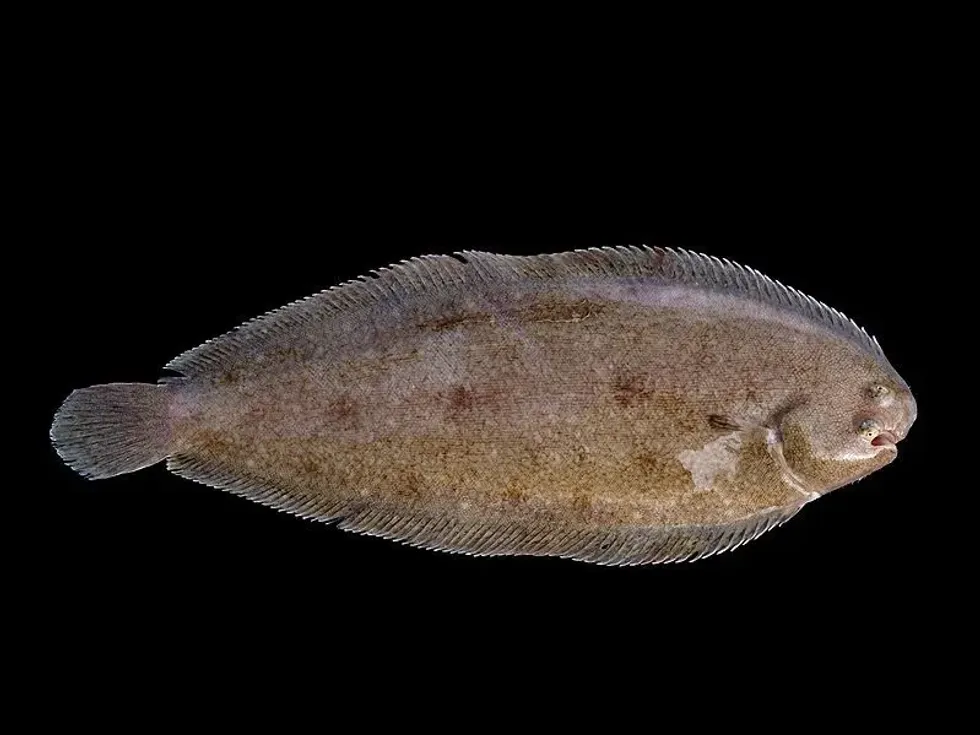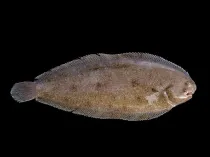The Dover sole is also referred to as the common sole or the black sole. This is a flatfish species that is typically found in the shallow parts of seas and oceans.
Generally captured by a type of fishing called trawling, Dover soles are quite popular as a food fish in many cuisines. This is mainly due to its shape that makes it easy to fillet and because of its unique buttery and versatile taste that can be prepared in many variations.
Due to a lack of data regarding their population, scientists have not been able to classify this species according to the conservation status. Keep reading and learning to find out more about this popular culinary gem.
Here are some of the most interesting facts about the Dover sole, which is loved by every seafood lover for its taste and texture. After reading these fascinating facts about the Pacific Dover Sole, do check our other articles on codfish and mutton snapper as well.
Dover Sole Interesting Facts
What type of animal is a Dover sole?
Dover sole is a fish belonging to the biological class of Actinopterygii owing to its bony structure coupled with its ray-shaped fins. In particular, the Dover sole is a type of flatfish.
What class of animal does a Dover sole belong to?
Dover sole belongs to the class of Actinopterygii and is a fish of the family Soleidae.
How many Dover soles are there in the world?
Due to a lack of data regarding their population, scientists have not been able to quantify their global population accurately as of yet. However, in some parts of the world, a notable drop in population was observed due to poor fishing practices and over-exploitation of the species for their culinary value.
Where does a Dover sole live?
A Dover sole typically is found in the oceans and seas. Common locations where the Dover sole is found are the East Atlantic Ocean, Mediterranean Sea, Southern North Sea, and in southern Norway to Senegal.
What is a Dover sole's habitat?
The Dover sole habitat is known to be most comfortable and abundant in the shallow parts of the seas and oceans it inhabits.
Normally, the Dover sole stations itself in waters that are only about 33-200 ft (10- 60 m) deep, submerging itself under loose sand in order to gain an advantage over unsuspecting prey that passes over the territory. The temperature of the waters the Common sole prefers normally ranges from 46.4-75.2 degrees Fahrenheit (8-24 degrees C).
However, the Dover sole does, at times, venture as deep as 660 ft (201 m) into the waters.
Who do Dover soles live with?
Like most other species of fish, even the Dover sole can be found to live in schools of their type.
How long does a Dover sole live?
The Dover sole lifespan is a surprisingly long life span, with male Dover sole life cycle achieving ages of 58 years and females of about 53 years.
How do they reproduce?
Dover soles in different locations of the world have different mating or spawning seasons, but generally, Common soles mate all year round.
Despite being predominantly shallow-water fish, the Dover sole, in order to spawn, goes deep into the waters to about 1400 ft (426 m) below the surface of the water.
Females lay eggs or expel them in huge numbers ranging from 52,000-266,000 eggs, all of which are then fertilized outside the bodies of the female by the males. Once fertilized, these eggs turn into larvae that ultimately find deeper spots to settle into until they are old and capable enough to find shallow waters where they can establish nurseries.
Typically, the larvae find these deeper areas in order to exploit the favorable environmental conditions at those depths.
What is their conservation status?
Due to a lack of untrusted and sufficient data, the IUCN has been unable to classify it based on its population and conservation status. However, in most places in the world, the species seems to be performing well with respect to its total population.
Some locations witnessed a marked drop in population which was attributed to poor fishing practices and over-exploitation of the species of fish for commercial purposes.
Dover Sole Fun Facts
What do Dover soles look like?
Dover soles are a type of flatfish. This means that their skeletal structure is very thin in breadth and their eyes are placed on only one side of their body.
Their exteriors are often slimy to touch and are covered by mucosal secretions as a defense mechanism. This is the reason for the colloquial name of a slippery sole. Their brown and gray colors are aided in their camouflage tactics which are used predominantly as a hunting tactic.
How cute are they?
Dover soles are not cute fish to look at. Their real value lies in their versatile taste and culinary applications.
How do they communicate?
There are no specific details about the communicatory behavior of Dover soles as still a lot of studies are to be performed on their biology.
How big is a Dover sole?
These flatfish species, on average, grow as large as 28 in (71 cm). However, female Dover soles have been observed to grow up to 4 in (10.16 cm) longer than their male counterparts, which can grow up to 32 in (81 cm).
How fast can a Dover sole swim?
There is no specific data that has been provided for the swimming speed of Dover soles.
How much does a Dover sole weigh?
A Dover Sole usually weighs about 3.5 lb (1.58 kg), which is surprisingly light considering its size.
What are the male and female names of the species?
No specific names have been assigned by the scientific community to Dover soles based on their gender. Males are referred to as male Dover soles while females are known as female Dover soles.
What would you call a baby Dover sole?
The Dover sole baby is typically called larvae, and once it grows or matures a little, it is referred to as a juvenile Dover sole.
What do they eat?
The regular Dover sole diet and Dover sole nutrition include mollusks, crustaceans as well as sea or ocean worms. Using their colors of gray and brown, they immerse themselves partially in the loose sands and mud of shallow waters and prey upon unsuspecting marine creatures that form a part of their diet.
Are they dangerous?
No incidents have been reported of any dangerous behavior with humans as of yet, however, some doctors all over the world advise against consuming many Dover soles owing to the possibility that a catch of Dover soles, due to contamination of waters, have high quantities of toxic compounds and heavy metals.
Would they make a good pet?
No, Dover soles would not make for good pets for two reasons. The first and foremost reason is its size.
Measuring up to 32 in (81 cm) long, these flatfish would be fairly difficult to fit into most regular-sized aquariums. Moreover, their lifestyle and behavior are such that it would need plenty of loose sand and mud to be comfortable.
It is nearly impossible to replicate its natural habitat in an artificial setting in an aquarium. The second reason is that, to date, mankind has never really domesticated these fish and treated them as pets so there is insufficient data to be able to offer these flatfish a healthy life in a restricted environment.
Did you know...
North sea Dover soles, when at a larval stage, have eyes, like other fish, on both sides of their body. However, as they grow into adult Dover soles, the fish’s eyeballs end up on the same side of its body. As an adult Dover sole, the fish has both its eyes on the same side of the body.
This fish species which is popular for cooking various interesting seafood recipes has been named after the famous English fishing port Dover. Given that they only come from these European waters, they carry a fairly high price tag.
Do people eat Dover sole?
Yes they do. After reading this section, Dover sole recipes for preparing a delicate sumptuous Dover sole fillet or a fried fish delicacy will certainly feature in your mind.
The best way to cook Dover sole varies according to your eating preferences. Dover sole fish are culinary delicacies in many places all around the world.
The main reason why these wild Dover sole fish are exploited and cooked is for commercial cuisine reasons.
The taste of Dover sole is enjoyed by all seafood lovers since their meat has a distinctive, juicy, and buttery taste and saturated fat that can be used in many different preparations in a cuisine. The taste of this seafood delicacy is enhanced multifold by sprinkling some parsley on top.
But do remember that the skin of this fish is slimy and sticky. So, try and remove the skin before you start cooking this delicate fish which is full of nutrition.
The most popular ways of eating Dover soles are as fillets that are grilled, fried, or cooked in a pan preparations to make it delicate.
Even though Dover fish is a fairly popular species of fish for human consumption, some doctors advise against it due to the high probability of the catch containing high percentages of toxic compounds as well as heavy metals, which can be extremely harmful to the human body.
So, you must look for recipes for Dover sole fillets that can address this concern.
Petrale sole vs Dover sole
The most obvious distinction between the petrale sole and the Dover sole is their appearance. The petrale sole has a distinctly ovular body compared to the Dover sole.
Another difference between these two similar species is that petrale soles consider other flatfish and different types of smaller fish as a part of their diet in addition to crustaceans, shrimp, and so on. Both types of fish are enjoyed as food fish. However, the petrale sole is preferred due to its rich taste with hints of nutty flavor.
Here at Kidadl, we have carefully created lots of interesting family-friendly animal facts for everyone to discover! Learn more about some other fish from our chum salmon fun facts, and brook trout interesting facts pages.
You can even occupy yourself at home by coloring in one of our free printable Dover Sole coloring pages.










